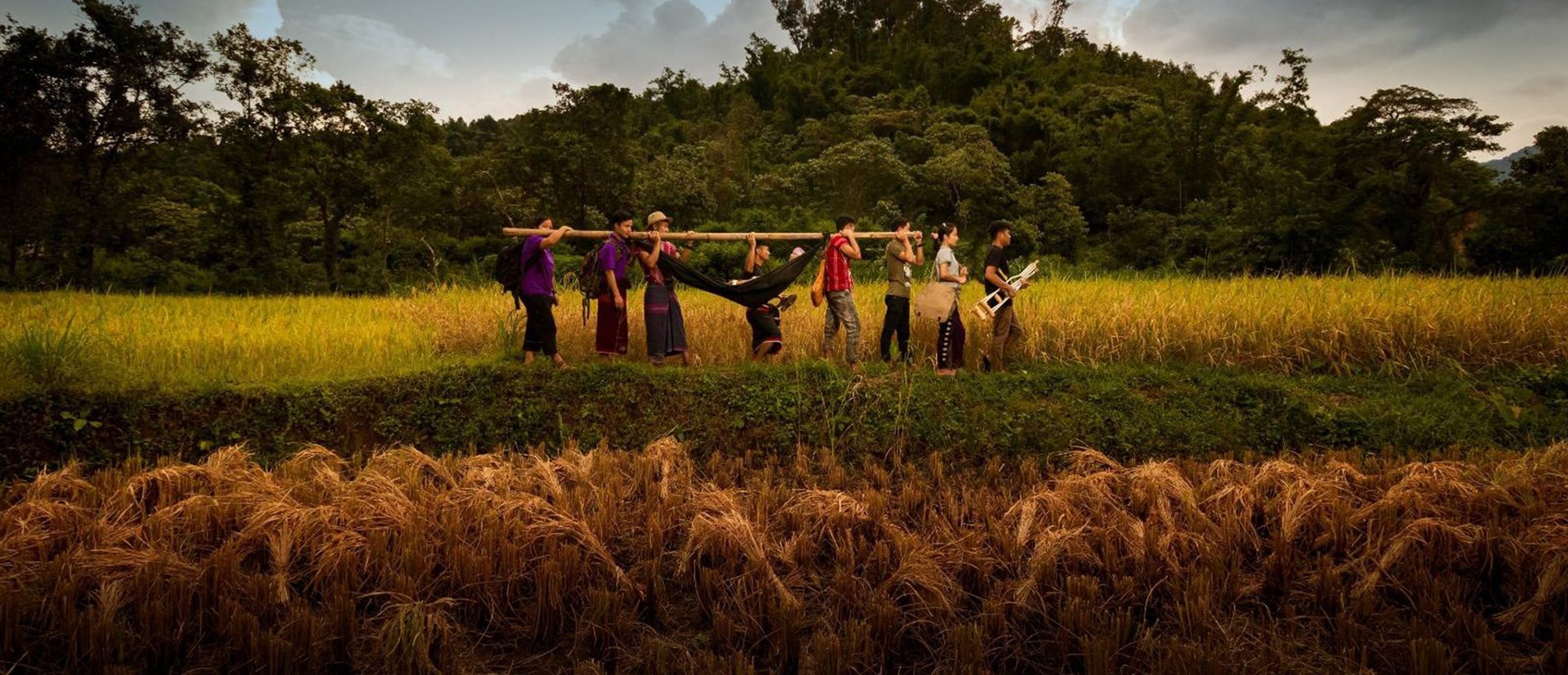
For people in remote jungle communities, basic healthcare can change everything.

WHY HEALTHCARE
38 million people in Myanmar lack access to basic healthcare
That's 70% of the country. 70 years of conflict have shattered the nation's healthcare system and displaced 1.48 million to the jungles. In the remote communities of southeast Myanmar, people must trek up to 3 days through the jungle—forging swollen rivers, scaling muddy mountains, and risking deadly wildlife to reach the nearest clinic. If they are too sick to walk, their community carries them. Depending on subsistence farming for daily survival, one health crisis can cost a family their livelihood - and their future.
In southeast Myanmar, 1 in 12 children dies before reaching their 5th birthday. That’s twice as likely as the rest of Myanmar, and 14 times more likely than children in the United States.
Preventable diseases like pneumonia, malaria, and diarrhea are responsible for over 40% of these deaths.
But access to healthcare is hope.Health
Livelihoods
People in remote communities must trek up to 3 days through the jungle to find help in a health crisis.
Increased access to healthcare lessens the toll of health emergencies on the livelihoods of families surviving day-to-day on subsistence farming. Earth Mission aims to make high-quality healthcare available within 2 hours of every remote community in southeast Myanmar.
Education
Access to healthcare means remote communities learn how to protect health, not harm health.
Healthcare education reduces harmful beliefs and practices, such as village midwives beating the bellies of pregnant women to help them give birth.
Families
Access to healthcare means access to life-saving care for more mothers and newborns.
Identifying and treating high-risk pregnancies means more healthy births. As the only cesarean section provider in the region, Earth Mission is able to save lives in an otherwise hopeless circumstance.
How do we tackle the
health crisis?
We train healthcare teams to empower people in remote southeast Myanmar with health, hope, and knowledge. Based on international standards, our locally accredited Physician Associate program, supported by our Engineering Technology and Surgical Training programs, trains local leaders to develop sustainable healthcare solutions in under-resourced areas.
In southeast Myanmar, the majority of deaths in children under the age of 5 are from preventable and treatable diseases—diseases we know and can cure with primary healthcare. Access to proper testing and treatment saves lives.
Rainy season is the season of danger and disease. One rainy season, a remote village experienced a malaria outbreak. Sick patients could not make the 5-hour trek to Earth Mission’s jungle clinic. Instead, a Physician Associate student and local malaria expert were sent to them. Over the course of 3 days, 33 patients were tested and treated. They labored day and night over 3 patients with high fevers, who eventually recovered. Because they received the testing and medicines they needed, a village was saved from a life-threatening disease.
Health
The people of southeast Myanmar are largely subsistence farmers. Day by day, they survive on what they can fish, hunt, collect from the jungle, and grow on hand-cleared land.
When a man’s 5-year-old son was severely burned in a cooking accident, he faced a difficult decision—and none of the choices were good. He could stay with his son in the city hospital’s burn unit while he missed growing season, leaving his wife and 5 other children at risk of malnutrition. He could leave the little boy alone for 3 months while he returned home to grow his family’s crops. Or, he could take his son home to their open-air bamboo hut, leaving his skin grafts vulnerable to infection in a non-sterile environment.
When there is so little margin in life, medical emergencies can throw a family into financial ruin—and negatively impact their lives for years to come. But when high-quality healthcare becomes accessible to remote villages, entire communities gain more margin to improve and thrive in other areas of life.
Livelihoods
After her first two babies died by malpractice and miscarriage, Naw Eh Jue Wah was left with a broken heart. Pregnant for the third time with no access to quality healthcare near her remote village, she had little hope that her baby would survive. But when she heard of Earth Mission’s jungle hospital—the only C-section provider in the region—she decided to do whatever it took to save her baby’s life.
After the two-day journey and three days of labor, the doctor called for an emergency C-section. Thanks to this young mother’s courage, she and her baby boy were in the right place at the right time—saving both of their lives. Holding her own baby in her arms for the first time, Naw Eh Jue Wah called him what he meant to her: “Bright Hope.”
Families
Tragedy entered a young Karen mother’s life after well-meaning village midwives pushed and punched her abdomen with a bamboo pole during a difficult labor. When she arrived at Earth Mission’s jungle clinic for an emergency C-section, her baby boy was delivered with a broken neck. His life was taken by the midwives trying to save it the only way they knew how.
When people in desperate circumstances lack the healthcare they need, harmful solutions often fill the void. Earth Mission is raising up local healthcare workers to prevent tragedies and provide hope. In a region with some of the highest rates of maternal and infant deaths, many of our Physician Associate graduates choose to specialize in obstetrics to reverse these outcomes.
Education
Why give?
Education multiplies impact!
In just 2 years, a Physician Associate program graduate has built up his staff from 5 to 50, sees roughly 10,000 patients every year, and has trained 131 new healthcare providers. As the Clinic Manager of a remote clinic, he is impacting countless lives.
That’s the power of education!







